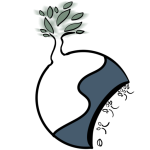How are form (形 xíng) and image (象 xiàng) formed? Today, we casually speak of “artistic images,” don’t we? For a nation, we discuss its national image; for a city, its urban image; for a company, its corporate image; for an individual, their personal image; for artworks, their artistic imagery; for calligraphy, the imagery of brush and ink. But what, then, is form? What is image? What is this “form-image” (xíngxiàng)? This is precisely what we must explore.
All too often today, those engaged in aesthetic theory or literary theory hastily turn to Western frameworks—borrowing definitions from their theories of art, literature, and aesthetics—and even memorizing their concepts. This rush is, frankly, concerning. In reality, the earliest, deepest, and most precise discourse on “form-image” lies within our own I Ching (Book of Changes), specifically in its Xici Zhuan (Great Treatise).
Consider the phrase: “In heaven, images take shape” (zài tiān chéng xiàng). Are not the phenomena of heaven precisely what we call “images”? Think about it: celestial phenomena (tiānxiàng), cloud formations (yúnxiàng), star patterns (xīngxiàng), weather phenomena (qìxiàng)—do we ever speak of “heavenly forms” (tiānxíng)? Do we say, “The heavenly form is pleasant today”? No. Why then do we speak of “heavenly images”? Because “image” (xiàng) itself represents an energy—a cluster or flow of energy. Notice this? Hence, “The celestial dynamism is vigorous; thus the noble person strives unceasingly.” The noble one’s life-energy is ceaseless, ever-active. Is this energy vague? Chaotic? Elusive? Can it be grasped in one’s hand? Truly, it cannot.
Conversely, “On earth, forms manifest” (zài dì chéng xíng). All terrestrial things, no matter how vast, are described in terms of “form”—including the earth itself (dìxíng, terrain). Even as small as a flower petal—”Ah, the form of this petal is so delicate, so crystalline, translucent like crystal, exquisite as a diamond”—isn’t this how we describe it?
Thus, “change becomes visible.” Change reveals itself precisely within this interplay. What does it reveal? That all phenomena attain “form-image” only through human engagement. I interpret it this way: it is through our participation that “form-image” comes into being. Therefore, “form-image” is created by humans—crafted by calligraphers, painters, writers, and literati. It is a product of human culture.
So what is “culture” (wénhuà)? Many equate it merely with knowledge—but this is far too simplistic, even reductive.
[Float-Menu id=”1″]

发表回复